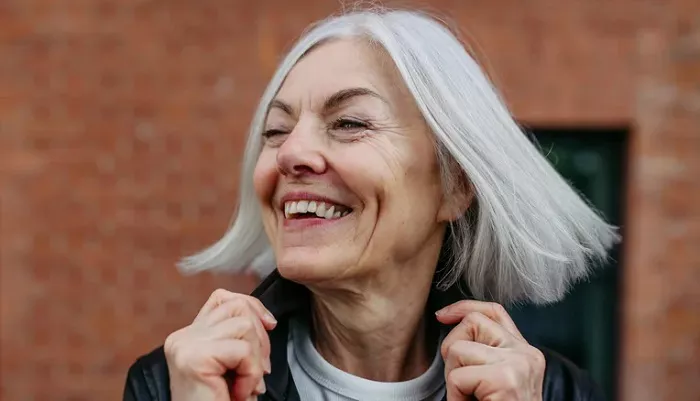By the time you reach your 50s, it’s common to notice that your hair no longer behaves like it used to. Your part may widen, the texture can change, and your strands might feel thinner or drier than before. But while aging hair presents new challenges, it’s far from a lost cause. In fact, with the right care and strategy, you can maintain healthy, strong, and vibrant hair well into your 50s and beyond.
Hair restoration expert Dr. Ross Kopelman explains, “One of the biggest misconceptions is that there’s nothing you can do about hair loss once you hit a certain age. That’s simply not true.” The key is to shift how you care for your hair — from the scalp up.
Focus on Scalp Health First
Healthy hair starts at the root, and that means prioritising scalp care. Over time, oil buildup, product residue, and dead skin can clog follicles and reduce hair vitality.
Haircare tip: Use a scalp exfoliant weekly to clear buildup and boost circulation. Look for ingredients like ketoconazole (found in dandruff shampoos) or go the natural route with rosemary oil, which research suggests may work as effectively as minoxidil when used regularly.
Understand That Aging Hair Can Still Thrive
Don’t assume age-related hair thinning is irreversible. Dr. Kopelman recommends treatments like low-dose oral minoxidil, which helps stimulate hair growth without the mess of topical solutions.
Advanced options include:
Microneedling and PRP (Platelet-Rich Plasma) therapy to reactivate follicles
Exosome therapy, a cutting-edge regenerative treatment showing early promise
If you’re noticing a widening part or excessive shedding, consult a specialist early — aging hair often responds well to timely care.
Adjust Your Moisture Routine
As we age, scalp oil production declines, leading to drier hair that can feel brittle or limp. While it’s tempting to overload with heavy products, mature hair typically needs lighter, targeted hydration.
Hair health advice:
Use non-comedogenic oils like argan or squalane to nourish without clogging pores
Try leave-in sprays for easy, buildable moisture
Soothe the scalp with products containing aloe, hyaluronic acid, or mild urea
Even regular trims can help rebalance moisture and revive natural shape.
Be Gentle and Consistent
Overprocessing and tight styles can stress already delicate follicles. Minimise damage with these tips:
Let hair air-dry when possible
Use soft brushes or wide-tooth combs
Replace harsh elastics with silk scrunchies
Lower the heat on styling tools, and use them less often
Support your strands from within by eating a balanced diet rich in protein, iron, and omega-3s, and consider supplements like biotin for added strength.
Aging doesn’t mean giving up on beautiful hair — it just means changing how you care for it. With mindful routines and expert-approved strategies, strong, healthy hair is achievable at any age. As Dr. Kopelman puts it, “Results don’t happen overnight, but they do happen with the right plan in place.”
So, whether you’re aiming to regain volume, strengthen thinning strands, or simply feel more confident, the journey to healthier hair in your 50s begins with small, consistent steps.
Related Topics:
- Top Hair Growth Products for Men Backed by Experts
- Hairfall in Your 20s? 5 Habits That Could Be to Blame
- Eat Yourself Beautiful: How Food Fuels Hair, Skin, and Nail Health


